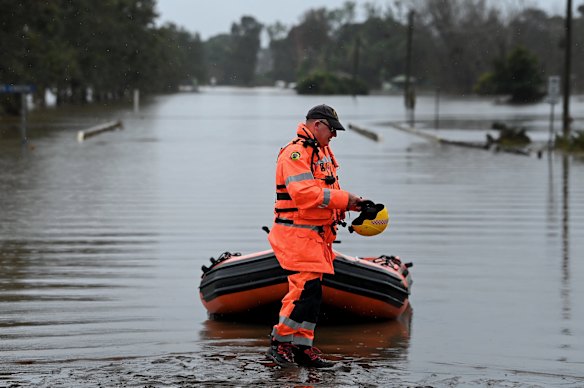Our Terms & Conditions | Our Privacy Policy
Rapid attribution study blames climate change, some scientists urge caution
“Traditional attribution studies, while thorough, often come out months after an event, missing the window when public attention and policy discussion are most active,” Faranda says.
Another major player is World Weather Attribution, which so far has conducted eight attribution studies this year, including for the Los Angeles fires in January, South Korean bushfires in February, and a Central Asia heatwave in March.
Loading
Other organisations, including Australia’s Bureau of Meteorology, are also actively researching how to attribute individual events to climate change.
The attribution studies can be rapid because the methodology is peer-reviewed in advance, and the figures are plugged in for specific events. However, King says it works better for extreme heat than rainfall.
When asked about studies released within days, King says: “In terms of making general statements around the role of climate change, it is possible to do it fairly quickly. In terms of having such precise numbers, it’s a bit ambitious.”
He says the reason is that some methodologies can be used during or immediately after an event, while others require a lag to collect the right data. The most robust studies use multiple methodologies, which is why World Weather Attribution’s studies come out weeks – rather than days – after an event.
Faranda says ClimaMeter uses a well-established method of comparing recent weather events with similar atmospheric configurations over the past four decades, distinguishing between those that occurred between 1950 and 1986, and those in the more recent era from 1987 to the present. The scientists are transparent about uncertainties and always publish confidence intervals, he says.
Faranda agrees that the most robust attribution studies combine different methodologies. “ClimaMeter is one piece of the puzzle – a fast and scalable one – and we view it as a stepping stone toward more detailed studies when necessary,” he says.
In their recent study on the NSW floods, Faranda and co-author Tommaso Alberti found that meteorological conditions similar to those observed during the NSW floods were up to 15 per cent wetter (an additional 3 to 4 millimetres of rain per day) and up to 0.75 degrees warmer, compared with the past.
The study concludes that the extreme rainfall that caused the flooding was mainly intensified by human-induced climate change, with natural variability playing a secondary role, and that adaptation was necessary.
An SES member at a staging point on Manning River Drive, Purfleet, where rescue boats have been launched.Credit: Kate Geraghty
University of Melbourne Professor Emeritus David Karoly, an international climate expert affiliated with the Climate Council, has some concerns about the methodology.
“This was done too quickly, in some sense, to be careful about what was relevant,” says Karoly. “It was probably a too-rapid attribution analysis.”
Karoly, who has contributed to IPCC (Intergovernmental Panel on Climate Change) reports, has sat on the Climate Change Authority and headed up science research for CSIRO, says he wrote to the ClimaMeter scientists earlier in the year to outline his concerns about the Cyclone Alfred attribution study, but did not receive a reply.
In that case, his criticism was that it was impossible to find similar events in the window from 1987 to today since there had not been a tropical cyclone (or ex-tropical cyclone) as far south as Brisbane in that time.
Loading
Last week’s attribution study for the NSW floods looked at events with similar surface pressure patterns – the arrangement of high- and low-pressure areas depicted as isobars on weather maps. With the Southern Annular Mode positive, as reported by this masthead, those pressure systems are bringing onshore flows of moist air from the ocean.
However, Karoly says the primary driver of Taree’s extreme rainfall last week was thunderstorms and upper-level disturbance in the atmosphere.
Faranda acknowledges that localised processes such as thunderstorms can add complexity that is not fully captured by ClimaMeter’s methods, and says the team’s goal is to be transparent about its limitations. He says he did not receive Karoly’s earlier email and would be happy to speak to the professor.
Despite his quibbles, Karoly said the conclusion of the ClimaMeter study is sound because it matches the warning from the IPCC that extreme rainfall events are intensifying with global warming, as well as the regional observational data in the Bureau of Meteorology and CSIRO’s 2024 State of the Climate report.
Get to the heart of what’s happening with climate change and the environment. Sign up for our fortnightly Environment newsletter.
Images are for reference only.Images and contents gathered automatic from google or 3rd party sources.All rights on the images and contents are with their legal original owners.



Comments are closed.